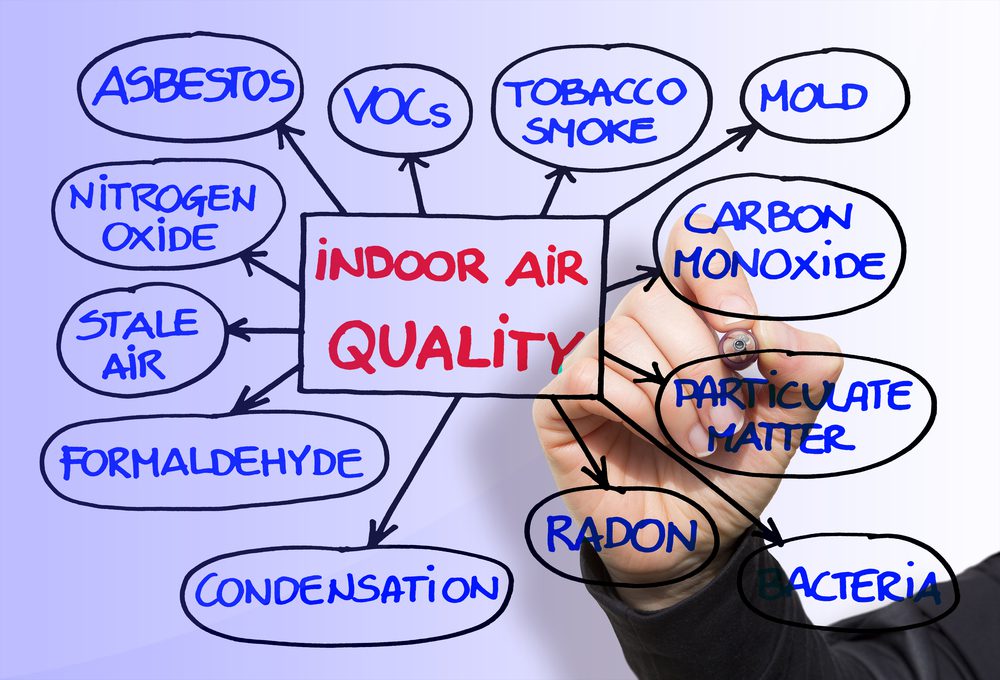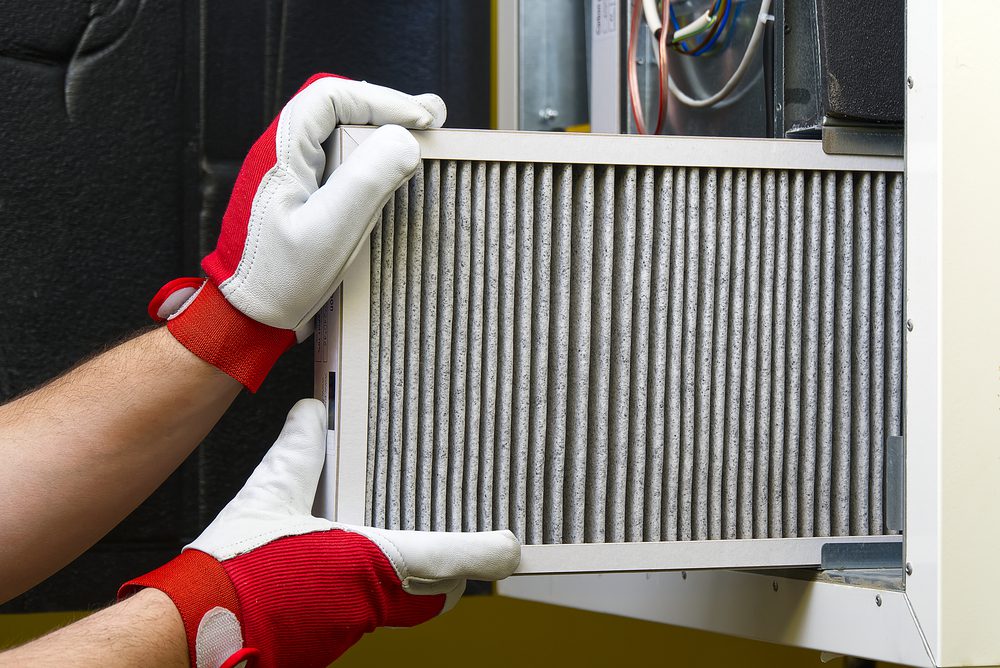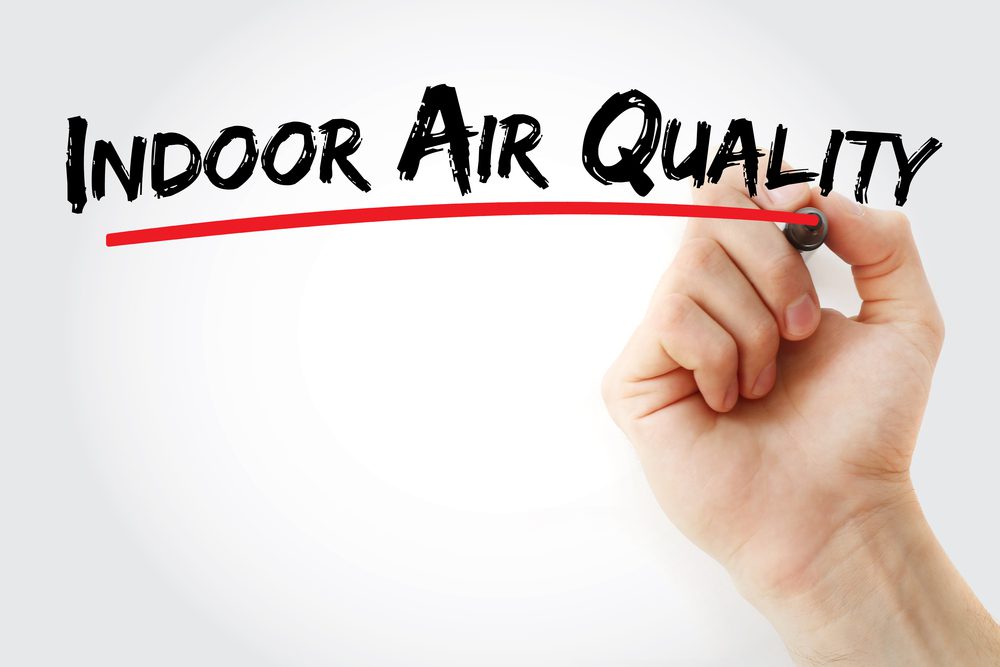Did you know that the average person inhales 2,000 gallons of air every day? That’s enough oxygen to fill over 600 party balloons!
And yet, we hardly ever think about what’s in the air we’re breathing.
It may just shock you to find out how many airborne pollutants you could be inhaling, especially at the workplace.
Today, we’re going to explore some common airborne pollutants that could be affecting people in your facility so you can begin to improve the indoor air quality (IAQ) in your facility.
Most Common Air Pollutants
Whether you’re inside or outside, air pollutants are all around us.
Some are more recognizable than others; some are visible while others are not; for some, the source is obvious, for others, it’s not.
To make things a little more simple, we’ve broken down the most common air pollutants into two categories:
- Combustion Byproducts
- Chemical Substances
Combustion Byproducts
‘Combustion byproducts’ is just a complex way of saying the stuff that is produced from burning something.
One source of combustion byproducts is exhaust fumes, like the ones from a company vehicle or a forklift. Another common source is smoke, like tobacco smoke or the smoke from a chimney stack.
A different source that you might not have expected is indoor cooking, like cooking on a stovetop, or with oil.
Essentially, when something is burned it produces fumes that carry airborne pollutants.
Even if something is burned outdoors, the pollutants can be carried indoors by wind, an employee, or because of poor ventilation.

Chemical Substances
Chemical substances can be found all over the workplace. Just think about all of the cleaning supplies used around your facility each and every day.
These same cleaning supplies also produce airborne pollutants.
Some cleaning agents can release volatile organic compounds (VOCs) directly into the air. VOCs are man-made chemicals that are used in a variety of products like paint thinner, chloroform, and petroleum fuel.
Most VOCs will be listed on product labels or safety data sheets. To make sure that your facility knows what chemicals are being brought in, a chemical inventory should be done to identify VOCs.
Keep in mind that some cleaning products release more harmful VOCs than others. Green or third-party certified products, for example, tend to release less harmful chemicals into the air. This is because the ingredients that make up a cleaning product dictate how harmful the chemicals it produces are, and natural cleaners tend to use less harmful chemicals.
As a result, products that are certified by Green Seal, EPA Safer Choice, or UL ECOLOGO come highly recommended.
But, just because a product is natural doesn’t mean it can’t produce air pollutants. There are many natural chemical substances that do this as well.
How to Improve Indoor Air Quality?
With the right systems and tools, you can have a positive impact on IAQ.
PRO TIP: The most effective way to improve IAQ is by reducing the amount of airborne pollutants in your facility. Check out our in-depth article that covers the best ways to improve IAQ here.
A fast and easy way to reduce airborne pollutants is to open doors and windows. This creates natural ventilation, allowing fresh air to cycle into the building as stale air cycles out.

Another method for removing air pollutants is to have your facility’s HVAC systems inspected. HVAC systems can often deteriorate without setting off any alarms. While it can still operate, it may not be operating properly. An inspection will uncover if any repairs or upgrades are needed.
You can also invest in portable air purifying technology. Portable air purifiers filter the air in a certain area of your facility. With wall-mounted and standing options, portable air purifiers have the flexibility to be moved around as needed. Just be sure to check, clean, and replace the air filters as needed.
Lastly, your facility should be cleaned on a regular basis to avoid dust buildup. When allowed to build up, dust can affect the efficacy of HVAC systems and render air filters useless. By keeping your facility dust free, the systems in place to improve IAQ can operate more efficiently.
Final Thoughts
Now that you know the factors that can lead to poor air quality you can identify them in your facility and rectify them if needed.
Not sure where to start? Consider talking to one of our air quality experts. Reach out to an Imperial Dade location near you to set up a free consultation today.
One of our experts will work with you to perform an in-person or virtual evaluation of your facility in order to identify and resolve air quality issues that may be affecting your employees.
